Paris: La Cité de la Lumière is even more beautiful than the city it is named after
When I first became aware of Paris: La Cité de la Lumière, I was taken aback by how stunning it looked in pictures. When I saw it in the flesh, however, I was even more awestruck. Paris, from Jose Antonio Abascal Acebo and Devir Games must be one of the most attractive games ever made, but what’s more important is how well it plays.
A game for just two players, Paris: La Cité de la Lumière is smaller than you might think (at about half the total mass of an average board game) and filled with interesting little decisions. I wouldn’t call it a portable game, but it’s the kind of thing that you can keep on the second shelf of your coffee table in the hopes that a curious guest will spot it, as opposed to leaving it hidden amongst the bigger boxes in your wider collection.
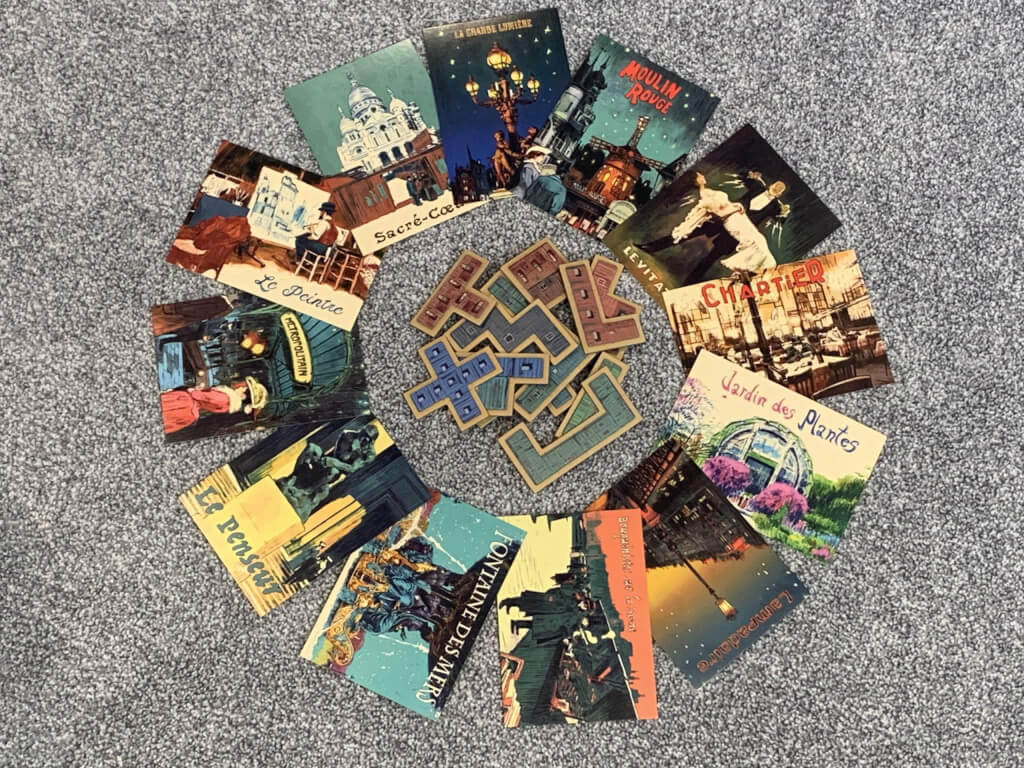
And it makes sense in that setting too, since it’s such a bright, breezy and brief experience. Each game lasts about half an hour or less and has two distinct phases that are both logical and easy to teach. The game takes place during the nineteenth century and focuses on the expansion of electrical lighting across Paris. The players compete to place their buildings in the most well-lit spaces, and the game is based on a layered tile placement puzzle with drafting elements.
During the first phase, the players take turns to choose one of two actions. They may either place the tile they have in hand (drawn from a personal stack that is kept secret from both players) or draft one of the building tiles. If they choose to place a tile, it goes directly onto the board which is ingeniously located on a raised floor inside the box base. If they choose to take a building, they can pick any of those available, but cannot place their tile.
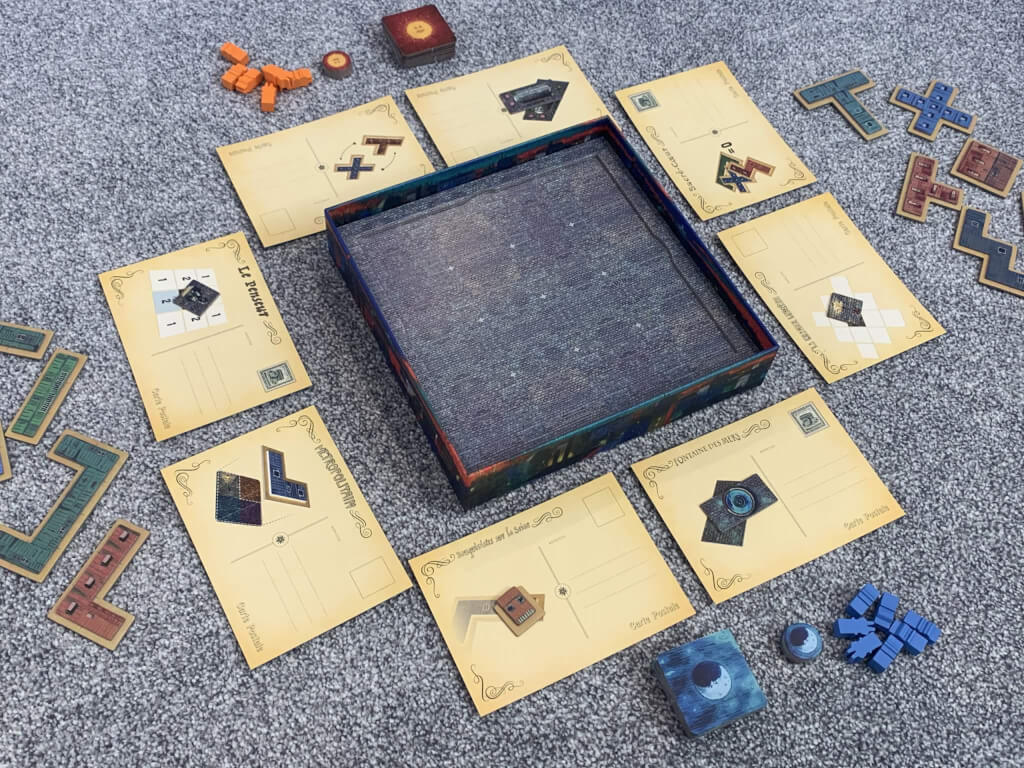
Each tile has some combination of four coloured squares on it, with orange and blue representing the players, purple representing either player and then a small number of street lamps spread across the tiles. The trick here is that each player has a fixed deck (with either a blue or purple back) that will always contain tiles that show their opponents colours as well as their own.
With that in mind, the decisions that the players will make during this first phase include determining which orientation to put their tile in (as well as where it goes) and also which buildings to take for the second phase of the game, based on the coloured spaces already showing. This is important because just in case you haven’t guessed, players will place their buildings during the second phase and can only do so on spaces of either their colour or the purple, shared spaces.
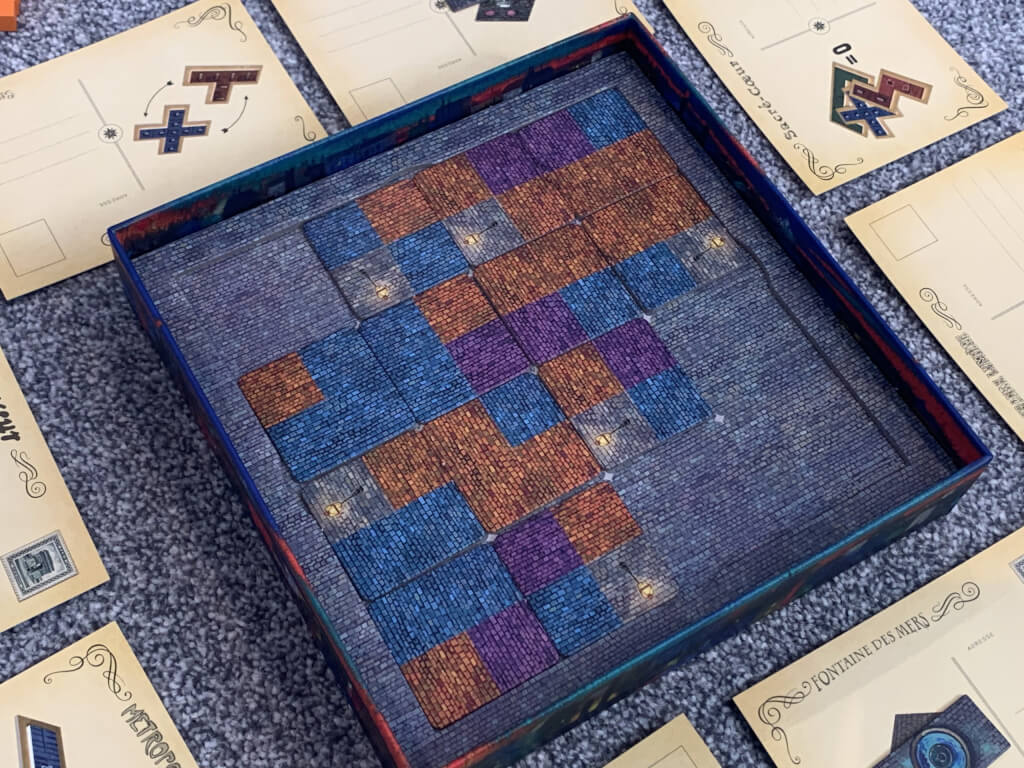
It can often be important to place a tile and prevent your opponent from getting a free opportunity to create a large swathe of their own colour, or it can be equally important to choose a building that you know will fit in the way that you want it to. How do you know that? Well, buildings that are well illuminated by street lamps will score more, it’s just about that simple.
Moving into the second phase, the players will each have a number of buildings and the board will now be built with every tile placed in the way that the players chose as they worked through the first phase. At this point I’ll introduce the postcards, which were placed during setup. Paris: La Cité de la Lumièrecomes with twelve of these and eight are used in each game, and every postcard brings with it a unique building, a character or a change to the normal rules.
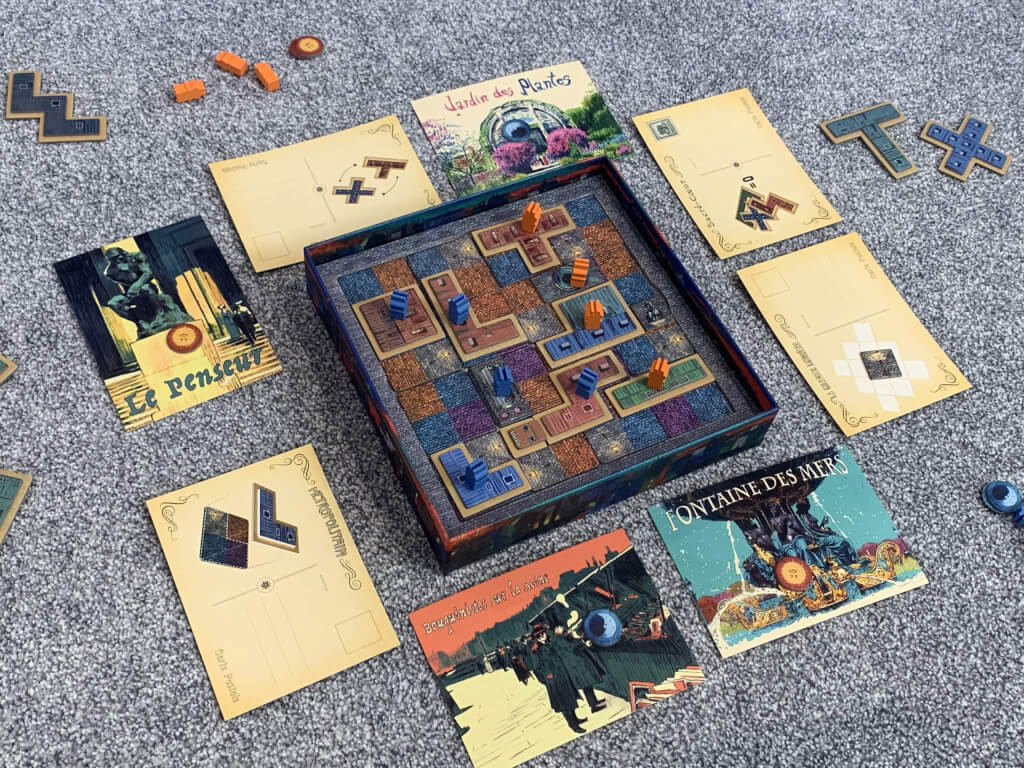
During the second phase, the players have two choices again, this time to either place one of their buildings on a legal space or to choose one of the postcards and take the benefit — which might also include placing a structure (such as a grand streetlight, a fountain or a garden) directly onto the board. Again, turns alternate and there are good reasons to do one or the other, often because it’s sensible to claim areas where there is an abundance of purple space that might be used for either player.
Once the last building or postcard turn is taken, the game ends and the final scoring occurs, which is simply a matter of scoring each building based on how much light is being cast on it, and then scoring each postcard one by one. Some of these share the rules about light, whilst others actually create light (and in turn points) whilst some are more unique such as the dancer, who entertains people passing by nearby buildings for, well, points.
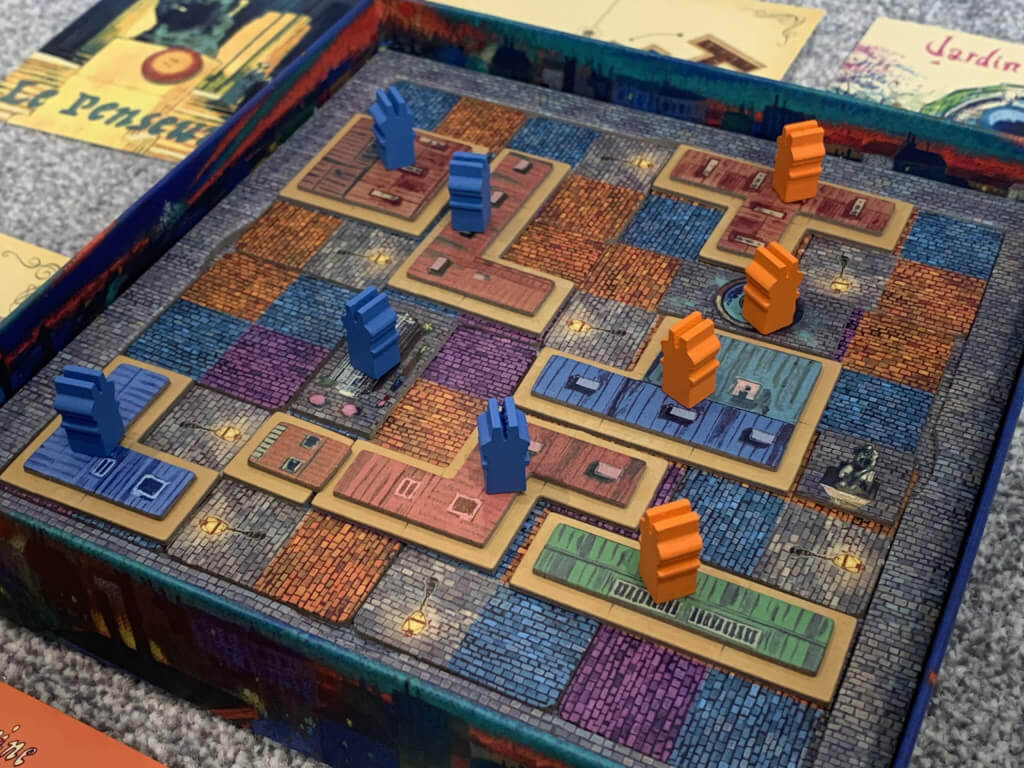
Now, it’s very hard to articulate how much decision making needs to go into what is essentially four simple actions split over two halves of a game that lasts half an hour, but believe me, there’s a lot going on here. There are the moment to moment decisions of planning your ideal city and responding to your opponent’s moves, as well as those long term decisions about what buildings you might want in the next round.
If you take this to elite levels of thinking (which I wouldn’t say I had reached) then you’re into a place where you can plan you tile placement to then have an idea of what buildings you want, and further to then understand which postcards will benefit you the most. Laying out a solid plan is critical, but it can easily be scuppered if your opponent throws a spanner in any part of it — which they surely will.
For all it’s beautiful production (I haven’t even touched on the awesome wooden buildings, the beautiful postcard art or the lovely double-layer building tokens) Paris is a fiendishly competitive game. I wasn’t kidding about leaving it under the coffee table earlier, because Paris deserves pride of place somewhere close to hand and I am certain that the way this game will be played will often be between the same two people, two or three times in a row.
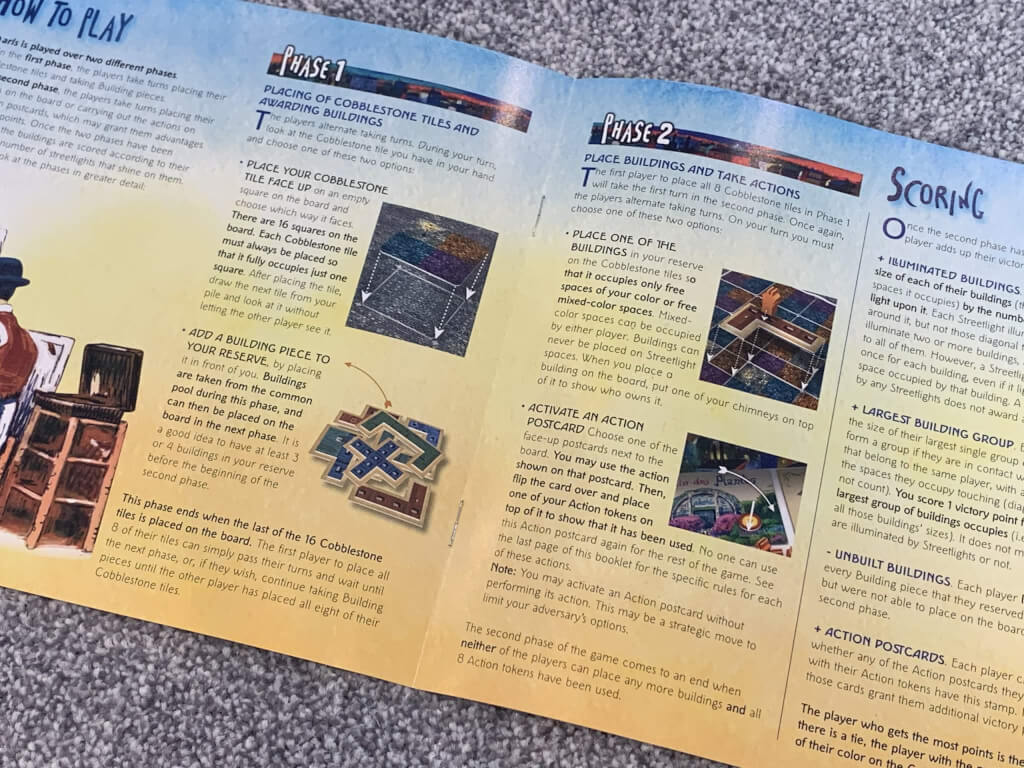
What does Paris lack? Well, if anything the openness of the information as the board is built out and as players draft buildings is a strength, but there were times when I felt a secret objective (perhaps optional) might have spiced up the scoring a bit. My wife disagrees with me on this wholly, by the way, and thinks that Paris is all the better for being a straightforward, almost Chess-like experience.
In summarising, if you have the option to play at two players often, then Paris: La Cité de la Lumière is a complete no brainer. In fact, I’d say that it’s my first “must own” game of 2020. It’s small, reasonably priced, incredibly well made and attractive, and it’s a super, super design that is simple, smart and hugely rewarding. I simply have no reasonable criticism for it, and I’m happy to play it any time I am asked to.
You can find more information on Paris: La Cité de la Lumière, on the developer’s website.
Love board games? Check out our list of the top board games we’ve reviewed.

Comments are closed.